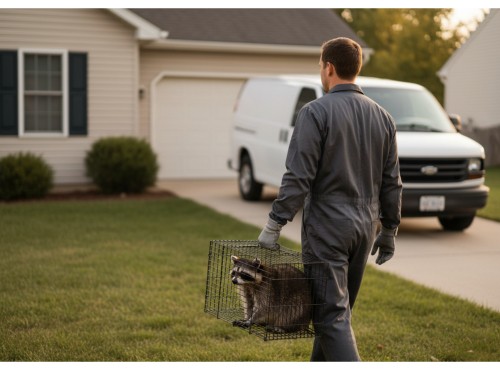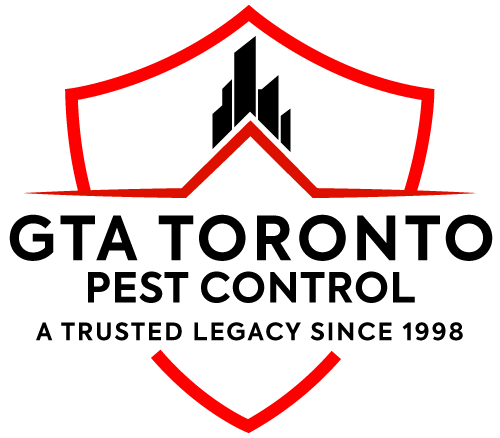
Toronto, Canada’s largest city, has long been celebrated for its green corridors, tree-lined neighbourhoods, and proximity to Lake Ontario. Yet these same environmental assets have also made it a thriving habitat for urban wildlife. Raccoons scaling eavestroughs in Trinity Bellwoods Park, squirrels nesting in attics near Yonge and Dundas, and skunks burrowing beneath decks in Etobicoke are all too familiar scenes. According to the City of Toronto’s Animal Services, wildlife-related service calls consistently rank among the top residential complaints, often exceeding 30,000 annual reports in recent years.
This increasing human–wildlife interaction reflects a broader ecological adaptation: animals have learned to thrive in the built environment. Abundant food waste, unsecured compost bins, and sheltered attics provide ample opportunities for nesting and foraging. The city’s ravines, including Don Valley Trails and High Park, act as natural wildlife highways, connecting green zones across dense residential and commercial districts.
While raccoons, squirrels, and skunks are often the focus of urban conflict, pigeons, bats, and even rats contribute to the complex wildlife matrix within Toronto’s infrastructure. These nuisance wildlife species not only cause property damage, such as chewed wiring, torn insulation, and contaminated air ducts, but can also transmit pathogens like leptospirosis, salmonella, and raccoon roundworm. Health Canada classifies several of these species under public health pests when they invade living or working spaces, necessitating professional mitigation through humane and regulated control programs.
In response, the pest management industry across Toronto and the Greater Toronto Area (GTA) has shifted toward humane, science-based wildlife removal methods that align with both Ontario’s Fish and Wildlife Conservation Act and Integrated Pest Management (IPM) principles. This modern approach emphasizes prevention, habitat modification, and exclusion work rather than reliance on chemical deterrents.
Companies providing wildlife removal services in Toronto now prioritize non-lethal solutions, such as live animal traps, one-way door systems, and post-removal entry-point sealing. These methods allow animals like raccoons, squirrels, and bats to exit safely while preventing their re-entry. The emphasis on humane relocation and eco-friendly deterrence reflects a growing public demand for ethical pest control practices. Particularly in residential neighborhoods surrounding Queen Street West, Bloor Street, and Bay Street, where historic buildings and aging attics offer ideal den sites.
As Toronto continues to expand vertically and horizontally, wildlife management professionals must balance animal welfare with human health, property integrity, and public safety. The challenge is not merely eviction but coexistence, maintaining a sustainable urban ecosystem where both people and wildlife can thrive without conflict.
Humane Wildlife Control Techniques
Toronto’s approach to wildlife management has evolved beyond removal alone. Modern pest management professionals (PMPs) now employ humane, science-backed control techniques that prioritize animal welfare, community safety, and regulatory compliance. These practices are grounded in the principles of Integrated Pest Management (IPM). This is a framework endorsed by the National Pest Management Association (NPMA) and Health Canada, which promotes non-lethal control, habitat modification, and environmental stewardship.
Exclusion Work and Entry Point Sealing
The cornerstone of humane wildlife management is exclusion work, a systematic process that identifies and seals all potential entry points in a structure. PMPs begin with a comprehensive site assessment, performing visual inspections and exclusion inspections of soffits, vents, eaves, chimneys, and crawl spaces. Using tools such as B&G sprayers for cleaning and disinfecting, and rodent-proof flashing for structural fortification, technicians close off gaps typically exploited by raccoons and squirrels.
Common access points in Toronto properties include:
-
Roof vents and attic junctions in homes around Spadina Avenue & Queen Street.
-
Aging fascia boards and loose siding found in older buildings near Dundas & Ossington.
-
Unscreened chimneys in century homes throughout Cabbagetown and Roncesvalles Village.
By reinforcing these ingress zones with galvanized steel mesh, louvered vent guards, and tamper-resistant covers, professionals ensure wildlife are safely kept out while preserving airflow and building integrity.
One-Way Door Systems
A hallmark of Toronto’s humane wildlife control is the use of one-way door systems. These devices allow animals to exit an enclosed space but prevent their re-entry. This technique is most effective for raccoons, squirrels, and skunks occupying attics, crawlspaces, or decks. PMPs install the one-way device at the primary exit hole after confirming no offspring remain inside, a step guided by seasonal breeding awareness and subsocial behavior knowledge.
According to data shared by the Ontario Ministry of Natural Resources and Forestry (MNRF), one-way exclusion has become the preferred urban wildlife method, reducing unnecessary relocations and improving animal survival outcomes. This aligns with Toronto’s public commitment to humane pest management and environmental compliance.
Live Trapping and Relocation
When exclusion is not feasible, such as during construction or when wildlife are trapped within walls, technicians deploy live animal traps and multi-catch traps designed to minimize stress and injury. These traps are baited strategically using behavior-specific attractants, considering factors like thigmotactic tendencies (preference for tight spaces) and phototactic responses (movement toward or away from light).
Captured animals are relocated following MNRF regulations, which limit relocation distances (typically within one kilometre of capture) to prevent territorial disruption and disease spread. Commonly trapped species include:
-
Raccoons in garages or sheds near Bathurst & Queen Street.
-
Skunks denning under decks in Etobicoke.
-
Squirrels nesting within attic insulation in North York homes.
All captured wildlife are released safely and in compliance with the Fish and Wildlife Conservation Act, which mandates humane handling at all times.
Eco-Friendly Deterrents and Habitat Modification
Beyond exclusion and trapping, PMPs increasingly rely on biorational repellents, eco-certified deterrents derived from natural compounds that condition animals to avoid treated zones. These may include scent-based deterrents or visual scare devices for bird control, especially in downtown corridors near Union Station and Harbourfront Centre, where pigeon activity is persistent.
Habitat modification complements these treatments. Removing food sources, installing bird spikes or netting, and maintaining trash rotation schedules reduce the attractants that draw wildlife into urban spaces. Landscape management like trimming overhanging tree branches and clearing vegetation overgrowth, further discourages access to roofs and attics.
Integrated Pest and Wildlife Programs
Commercial facilities such as restaurants near King & Bay and warehouses along Dufferin Street benefit from Integrated Pest and Wildlife Management programs combining pest exclusion, monitoring devices, and preventative services. These programs often include:
-
Routine inspections for droppings, gnaw marks, or rubbing marks.
-
Trend analysis to identify recurring entry patterns.
-
Documentation through service logs and post-treatment reports to maintain audit readiness for property managers and municipal inspections.
The integration of pest and wildlife services ensures structural health, compliance, and long-term cost savings while maintaining ethical standards of animal care.
A Shift Toward Humane Professionalism
Today’s wildlife control companies in Toronto emphasize humane removal as part of professional integrity, not merely regulatory obligation. The adoption of IPM-aligned exclusion strategies, eco-conscious repellents, and behavioral monitoring marks a clear transition from reactive pest removal to proactive wildlife management.
Whether addressing raccoon activity near Queen & Bathurst, bird nesting around Union Station, or squirrel incursions in Rosedale, the city’s licensed Pest Management Professionals (PMPs) uphold a dual mission: protect human property and preserve ecological balance. Toronto’s urban wildlife challenges continue to evolve, but with humane, informed, and compliant practices, coexistence is increasingly within reach.
Choosing the Right Wildlife Removal Company in Toronto
When wildlife finds its way into a home, quick and humane action becomes a priority for residents across Toronto and the surrounding region. Whether the problem involves raccoons in the attic, a family of skunks under a deck, or birds nesting in a chimney, homeowners need professional help that’s both safe and affordable. Choosing the right company is more than just a phone call; it’s about finding licensed experts who can diagnose the issue, remove the animals humanely, and prevent future infestations effectively.
What Homeowners Should Look For
Reputable wildlife removal companies in Toronto and nearby areas such as Brampton, Mississauga, Markham, Scarborough, and Vaughan share several key qualities. Their teams are fully trained, experienced, and dedicated to resolving wildlife problems the right way. They conduct detailed inspections, provide free quotes, and explain what will be done step-by-step, ensuring customers understand how their home will be protected.
A good company will:
-
Offer affordable, humane solutions for removing skunks, squirrels, raccoons, bats, and birds.
-
Provide a written guarantee and warranty on exclusion work and repairs.
-
Use live traps, one-way doors, and exclusion barriers that allow animals to leave safely.
-
Be available for emergency calls, offering same-day appointments when wildlife intrusion poses immediate risks.
-
Have strong local reviews, testimonials, and references that verify customer satisfaction.
Service Quality and Professionalism
When a homeowner contacts a wildlife control service, the company should send a qualified technician to assess the situation carefully. Using advanced inspection tools, they identify entry points around chimneys, roofs, or decks, then develop a plan to remove unwanted critters and secure the structure.
The best providers in Toronto and the GTA understand that each infestation is unique. A skunk family under a porch requires a different strategy than bats roosting inside an attic. Wildlife technicians explain these differences clearly, helping customers choose the most effective and humane approach for their property.
Customers are encouraged to read company reviews and verify that the business operates with proper licenses and insurance. Many leading firms, such as those serving Richmond Hill, Oakville, and Downtown Toronto, display certifications and AAA-rated reviews on their websites.
From Inspection to Peace of Mind
After wildlife is removed, the process doesn’t stop there. Repairs, sealing, and follow-up inspections ensure the animals do not return. Many Toronto companies include one-year warranties on completed work, providing homeowners with peace of mind that their investment is protected.
For example, if a squirrel nest is found in a customer’s attic, the technician will first humanely remove the adults and babies, then repair all access points and reinforce weak spots using heavy-gauge steel mesh. Similar measures are taken for raccoon or skunk infestations, ensuring the problem is fully solved, not just temporarily fixed.
Contacting a Local Expert
Toronto residents can easily book a free inspection or request an estimate online at GTA Toronto Pest Control. Most wildlife removal teams are available during regular business hours, and many offer after-hours emergency service for urgent calls. Whether it’s a weekend raccoon encounter or a late-night skunk problem, local experts respond quickly and handle the situation safely.
Homeowners can reach out by phone or email to schedule an appointment. It’s always recommended to choose a company with verified customer reviews and a reputation for ethical, humane solutions. The right wildlife removal partner doesn’t just eliminate the problem. They protect families, pets, and property from future infestations while ensuring every animal is treated with respect.
Author Bio: Naeem Choudhry
Pest Control Expert
Naeem Choudhry is a seasoned pest control specialist with over 20 years of hands-on experience. Based in Toronto, he stays up to date with the latest industry best practices and is an active member of the National Pest Management Association of Canada.
Known for his practical tips and outstanding customer service, Naeem frequently hosts community workshops where he educates the public on pest identification, behaviour, and effective control methods. When he’s not out in the field, he shares his expertise through articles, educational events, and community outreach initiatives.
For more insights, follow him on x.com.
